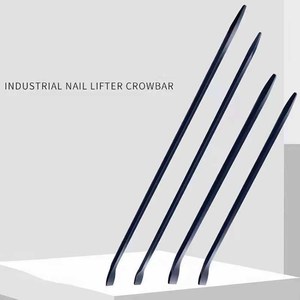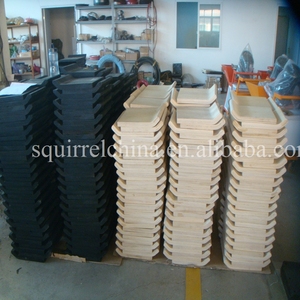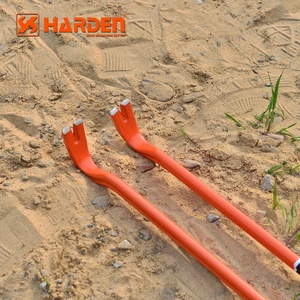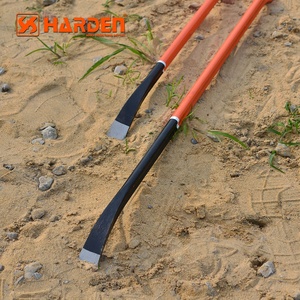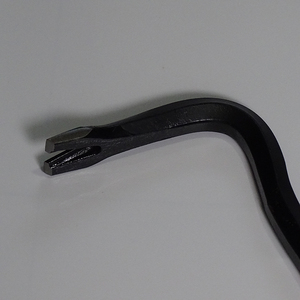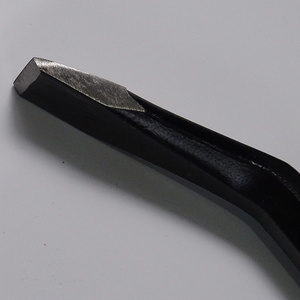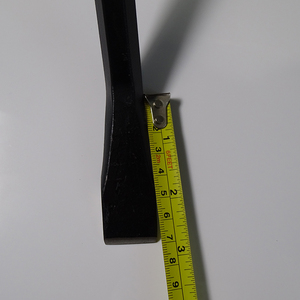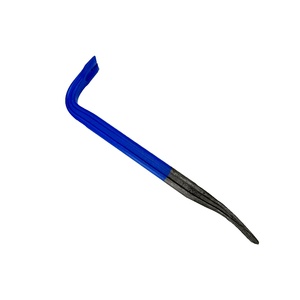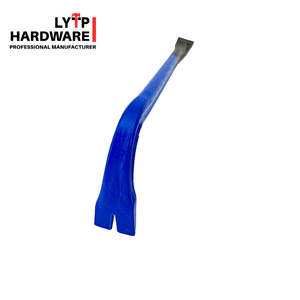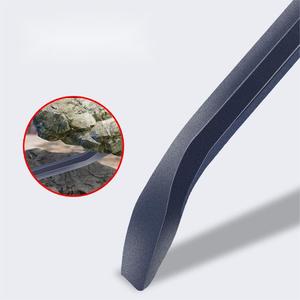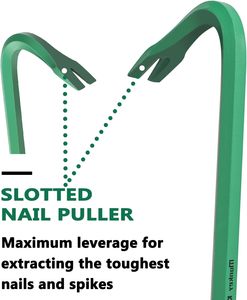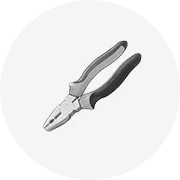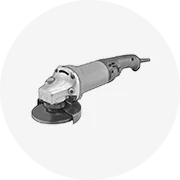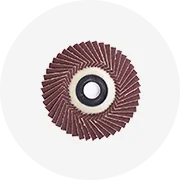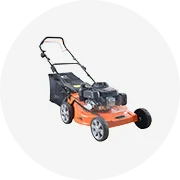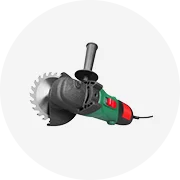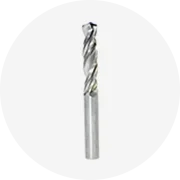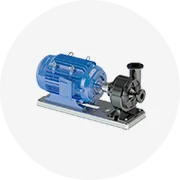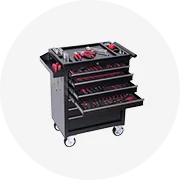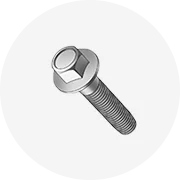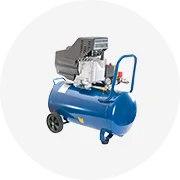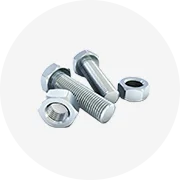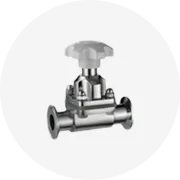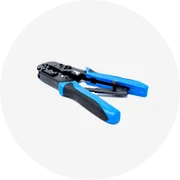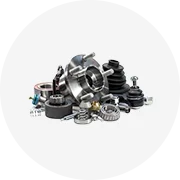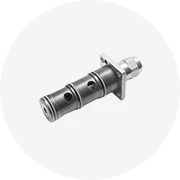Types of Steel Railway Crowbars
A steel railway crowbar (also known as a steel railroad pry bar) is an essential hand tool with a steel shaft and chisel-like blade used for digging, prying, lifting, and leveraging railway materials. These robust tools feature sharpened tips for easy surface penetration and wider blades for effective prying and lifting tasks.
Industry Insight: Steel railway crowbars are fundamental tools for railroad maintenance crews, with each type designed for specific applications in track maintenance, construction, and emergency repairs.
Standard Crowbar
The standard crowbar features a flat, straight design ideal for sliding into narrow spaces. Its versatile construction makes it suitable for various prying and lifting tasks in railway maintenance.
Best for: General-purpose railway maintenance, accessing tight spaces, basic leverage tasks
Bishop Crowbar
Named after inventor John Bishop, this specialized tool combines a traditional crowbar with a pointed chisel tip and curved claw. This unique design makes it particularly effective for rail laying, tie insertion, and spike removal.
Best for: Rail laying, tie insertion, spike removal operations
Railroad Crowbar
A heavy-duty tool specifically designed for prying rails and other substantial railroad materials. These bars typically measure between 60-90cm in length and provide exceptional leverage for demanding railway applications.
Best for: Heavy-duty rail prying, track alignment, major maintenance tasks
Hex Crowbar
Distinguished by its hexagonal cross-section shaft, the hex crowbar provides superior grip and torque control. With its pointed tip and flat blade design, it excels in heavy-duty applications such as removing large rocks, lifting heavy objects, and digging in hard ground.
Best for: Maximum torque applications, high-leverage tasks, jobs requiring enhanced grip
| Crowbar Type | Key Features | Primary Applications | Typical Length Range |
|---|---|---|---|
| Standard Crowbar | Straight design, flat tip | General prying, lifting, leverage tasks | 36-60 inches |
| Bishop Crowbar | Pointed chisel tip, curved claw | Rail laying, tie insertion, spike removal | 42-72 inches |
| Railroad Crowbar | Heavy-duty construction, reinforced tip | Rail prying, track alignment | 60-90 cm |
| Hex Crowbar | Hexagonal cross-section, enhanced grip | Heavy material handling, hard ground digging | 48-72 inches |
Specifications and Maintenance of Steel Railway Crowbars
Key Specifications
The performance and functionality of steel railway crowbars depend on several critical specifications:
Length
The crowbar's length directly affects its leverage capability. A 60-inch crowbar can apply approximately 3 times the force to an object, while a 30-inch crowbar provides roughly 1.5 times the force.
Selection tip: Choose longer crowbars for maximum leverage and shorter ones for better control
Material
Material composition significantly impacts durability and strength. Steel crowbars offer superior performance compared to cast iron alternatives due to steel's hardness and resistance to damage.
Quality indicator: Look for high-carbon or alloy steel construction for maximum durability
Shape
The crowbar's design facilitates specific functions—pointed ends access small cracks easily, while flat ends excel at prying and lifting. Railway-specific crowbars feature specialized shapes to remove track spikes without damaging wooden ties.
Application factor: Match end shape to your primary task requirements
Thickness
Crowbar thickness varies according to intended use—thicker bars handle heavy-duty applications while thinner designs suit more precise work requiring delicacy and control.
Usage consideration: Heavier work demands thicker bars for safety and durability
Weight
Weight impacts both effectiveness and user comfort. Heavier crowbars provide more driving force but cause greater fatigue during extended use, while lighter options offer better control and reduced user strain.
Ergonomic factor: Balance weight requirements with operator comfort for optimal productivity
Maintenance Recommendations
Proper maintenance extends the lifespan of steel railway crowbars and ensures safe, effective operation:
Essential Maintenance Practices
- Regular Cleaning: Remove mud and dirt after each use with a brush or damp cloth. Store clean and dry to prevent rust formation.
- Routine Inspection: Check regularly for damage, wear patterns, or rust development. Repair or replace damaged crowbars immediately to prevent accidents.
- Proper Lubrication: Apply light machine oil or suitable lubricant to any moving parts to maintain smooth operation.
- Appropriate Usage: Only use crowbars for their intended purposes to prevent damage and excessive wear.
Maintenance Tip: After exposure to wet conditions, thoroughly dry your steel railway crowbar and apply a light coat of oil to prevent rust formation. This simple step can significantly extend the tool's service life.
How to Choose Steel Railway Crowbars
Selecting the optimal steel railway crowbar requires careful consideration of several factors to ensure performance, safety, and longevity:
| Selection Factor | Considerations | Recommendation |
|---|---|---|
| Material | Impacts strength, durability, and corrosion resistance | High-carbon steel for strength, stainless steel for corrosion resistance |
| Length | Affects leverage power and control (18-60 inches available) | Longer bars (36+ inches) for maximum leverage, shorter for better control |
| Tip Design | Determines functionality for specific tasks | Pointed tips for penetration, flat tips for lifting and leverage |
| Grip/Handle | Influences comfort, control, and fatigue during use | Ergonomic grips or padded handles for extended use comfort |
| Weight | Impacts force application and user fatigue (2-10 pounds typical) | Heavier weights for maximum force, lighter for extended usage |
Selection Insight: Consider the specific environmental conditions of your railway operations. For areas with high moisture or exposure to chemicals, investing in corrosion-resistant materials will provide better long-term value despite higher initial costs.
Safety Note: Always select crowbars with appropriate weight and leverage capacity for your intended tasks. Using undersized tools for heavy-duty applications creates significant safety hazards and increases risk of tool failure.
DIY and Replacement of Steel Railway Crowbars
While professional assistance is recommended when dealing with railway maintenance tools, understanding the process for replacing damaged crowbars is essential knowledge for maintenance teams:
Step 1
Discontinue Use
Immediately stop using any damaged crowbar to prevent injury or infrastructure damage
Step 2
Professional Assessment
Have a qualified expert examine the crowbar to determine repair feasibility
Step 3
Repair or Replace
Based on assessment, either repair according to manufacturer specifications or replace
Step 4
Proper Disposal
Dispose of unrepairable crowbars according to local regulations and environmental standards
When to Replace Instead of Repair
- When repair costs exceed replacement costs
- When repair time would create significant operational delays
- When repairs cannot fully restore original functionality or safety
- When the crowbar shows signs of metal fatigue, cracks, or structural compromise
- When the crowbar has been subjected to improper use or extreme conditions beyond its design parameters
Warning: Never attempt to repair critical structural components of steel railway crowbars through welding or other DIY methods unless properly certified. Improper repairs can lead to catastrophic tool failure during use, resulting in serious injury.
Frequently Asked Questions
A steel railway crowbar is an essential heavy-duty tool used in railroad maintenance and operations. Made from hardened steel, it's specifically designed for track alignment, rail lifting, and heavy material handling tasks. Its robust construction provides the leverage and durability required for demanding railway applications.
Steel railway crowbars serve multiple functions across several industries:
- Railway Maintenance: Track alignment, rail lifting, spike removal, tie positioning
- Construction: Moving heavy materials, demolition work, concrete form alignment
- Mining: Rock extraction, equipment positioning, safety applications
- General Applications: Heavy-duty leverage tasks, material handling, emergency response
Their versatility makes them valuable tools beyond just railway operations.
Ensuring quality when purchasing steel railway crowbars involves several verification steps:
- Verify the steel grade used in manufacturing (hardened or alloyed steel preferred)
- Check for proper heat treatment certification
- Examine the finish quality and manufacturing consistency
- Review user testimonials and industry recommendations
- Request sample testing results for critical applications
- Verify compliance with industry standards and specifications
Reputable suppliers will provide documentation regarding material composition and manufacturing processes.
Yes, many suppliers offer customization options for steel railway crowbars to meet specific operational requirements:
- Dimensional Customization: Length, width, and thickness can be modified
- End Shape Modification: Specialized tip configurations for specific tasks
- Material Selection: Different steel alloys for specific environmental conditions
- Grip Enhancements: Ergonomic handles or coating options
- Weight Optimization: Balanced for specific applications
Custom modifications typically require minimum order quantities and may incur additional costs.
Steel railway crowbars offer several environmental advantages:
- Made from steel, a highly recyclable material (up to 100% recyclable)
- Long service life reduces resource consumption and waste generation
- Durable construction minimizes replacement frequency
- Proper disposal through metal recycling programs minimizes environmental impact
- Manual operation requires no fossil fuels or electricity
When properly recycled at end-of-life, these tools contribute to circular economy principles in industrial operations.



